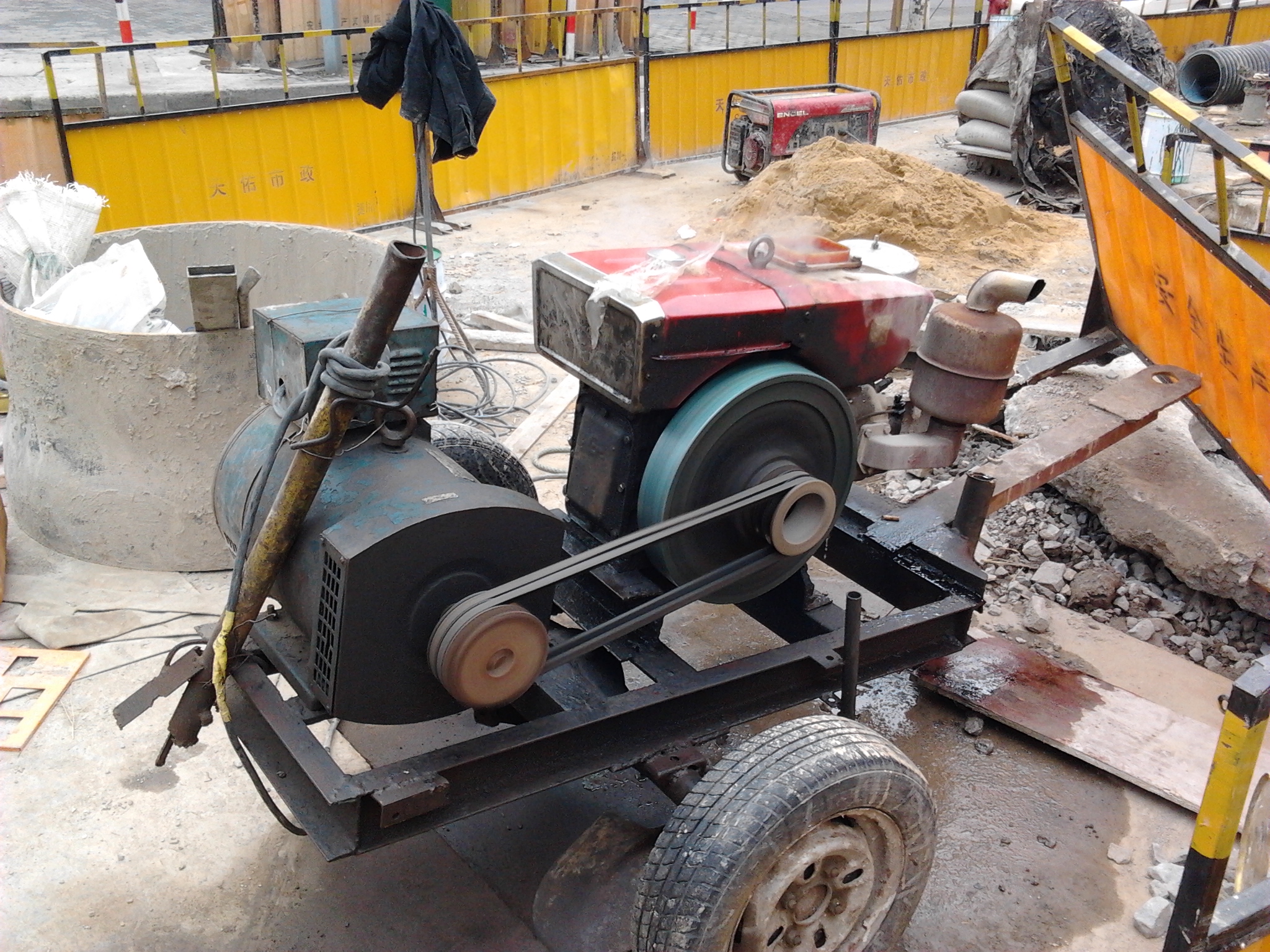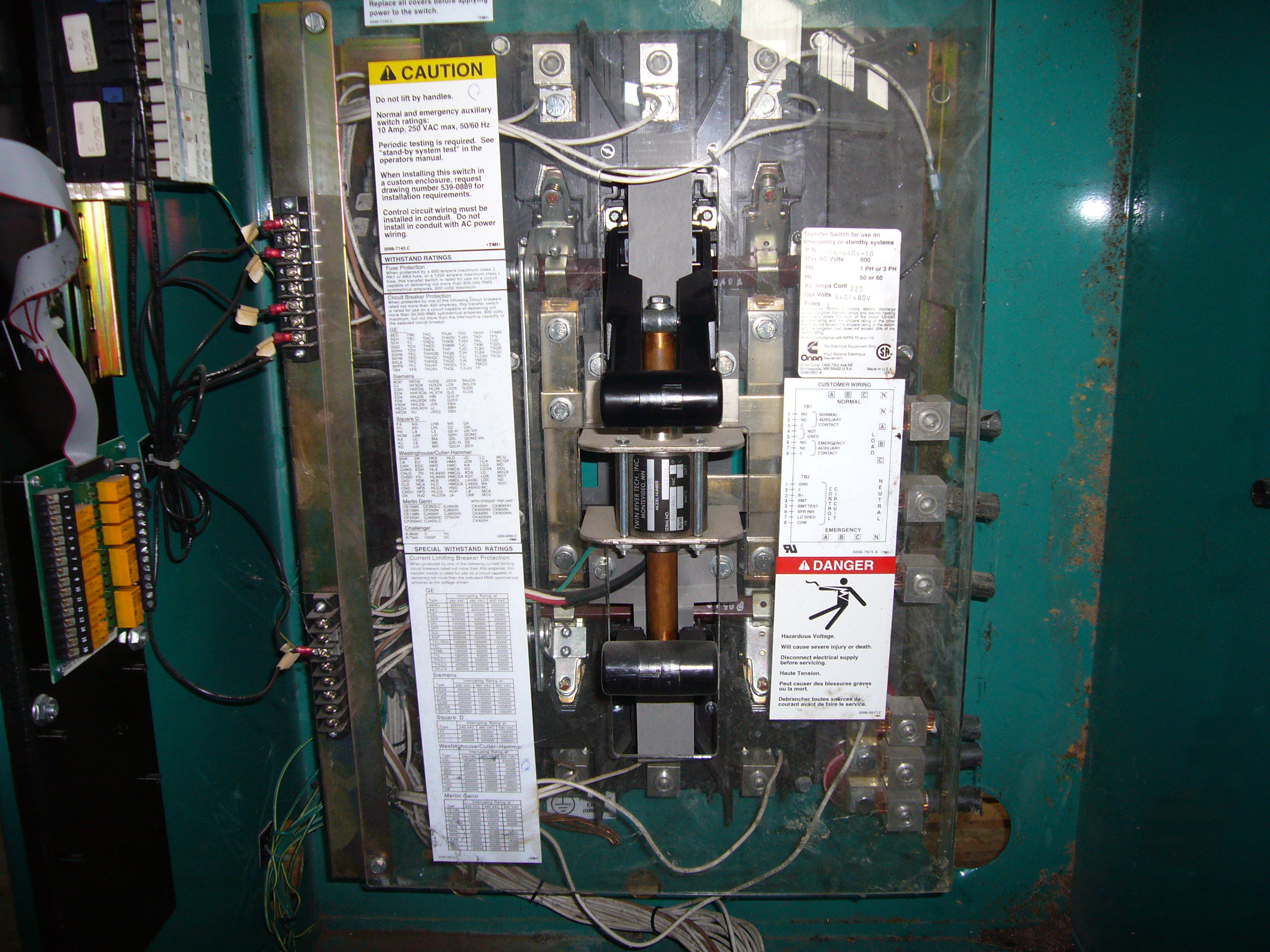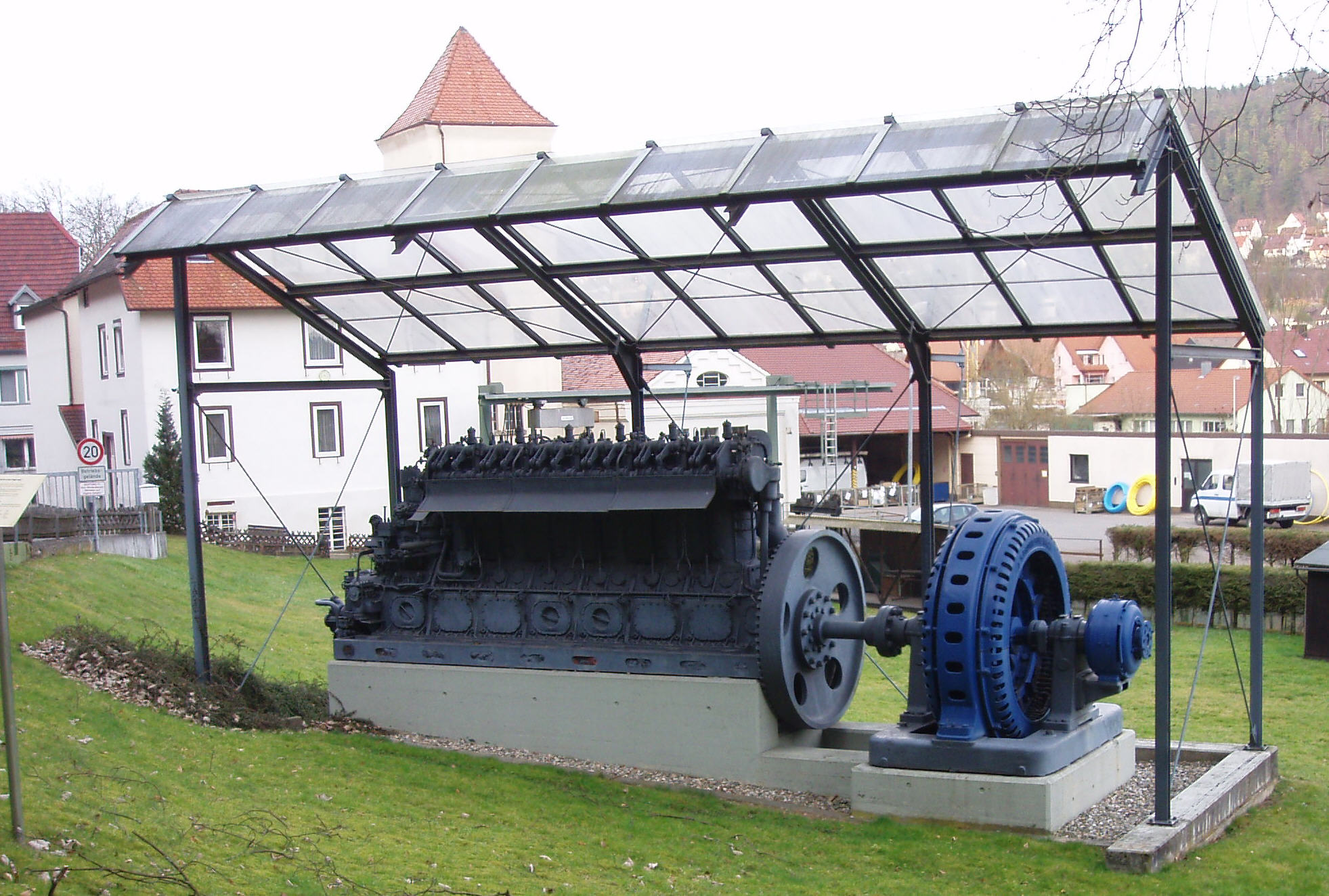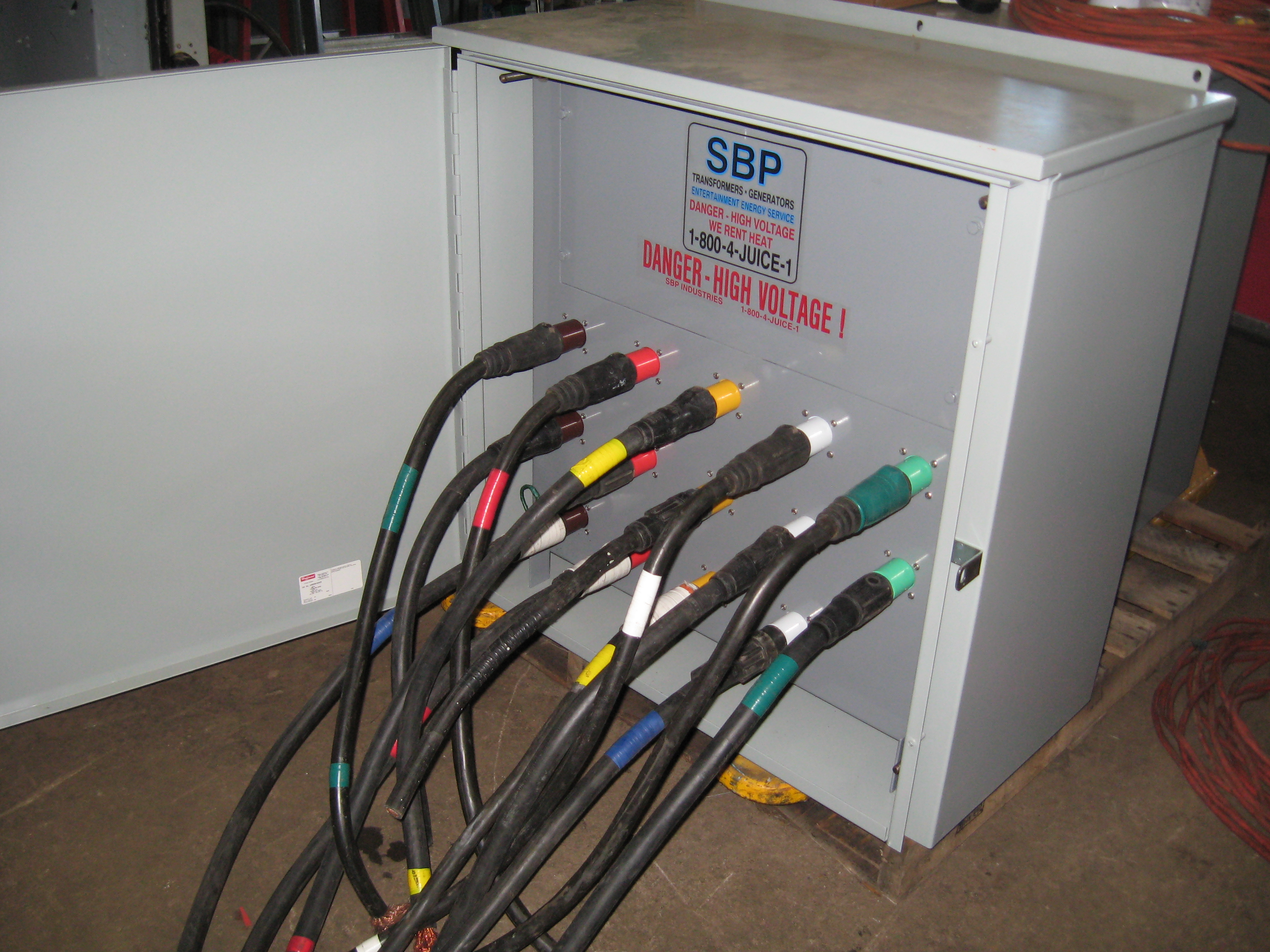engine-generator on:
[Wikipedia]
[Google]
[Amazon]
 An engine–generator is the combination of an
An engine–generator is the combination of an

 Engine–generators are available in a wide range of power ratings. These include small, hand-portable units that can supply several hundred watts of power, hand-
Engine–generators are available in a wide range of power ratings. These include small, hand-portable units that can supply several hundred watts of power, hand-
 Engine–generators are used to provide electrical power in areas where utility (central station) electricity is unavailable, or where electricity is only needed temporarily. Small generators are sometimes used to provide electricity to power tools at construction sites.
Trailer-mounted generators supply temporary installations of lighting, sound amplification systems, amusement rides, etc. You can use a wattage chart to calculate the estimated power usage for different types of equipment to determine how many watts are necessary for a portable generator.
Trailer-mounted generators or mobile generators, diesel generators are also used for emergencies or backup where either a redundant system is required or no generator is on-site. To make the hookup faster and safer, a ''tie-in panel'' is frequently installed near the building switchgear that contains connectors such as camlocks. The tie-in panel may also contain a phase rotation indicator (for 3-phase systems) and a circuit breaker. Camlock connectors are rated for 400 amps up to 480-volt systems and used with 4/0 type W cable connecting to the generator. Tie-in panel designs are common between 200- and 3000-amp applications.
Standby electrical generators are permanently installed and used to immediately provide electricity to critical loads during temporary interruptions of the utility power supply. Hospitals, communications service installations, data processing centers, sewage pumping stations, and many other important facilities are equipped with standby power generators. Some standby power generators can automatically detect the loss of grid power, start the motor, run using fuel from a natural gas line, detect when grid power is restored, and then turn itself off—with no human interaction.
Privately owned generators are especially popular in areas where grid power is undependable or unavailable. Trailer-mounted generators can be towed to disaster areas where grid power has been temporarily disrupted.
Engine–generators are used to provide electrical power in areas where utility (central station) electricity is unavailable, or where electricity is only needed temporarily. Small generators are sometimes used to provide electricity to power tools at construction sites.
Trailer-mounted generators supply temporary installations of lighting, sound amplification systems, amusement rides, etc. You can use a wattage chart to calculate the estimated power usage for different types of equipment to determine how many watts are necessary for a portable generator.
Trailer-mounted generators or mobile generators, diesel generators are also used for emergencies or backup where either a redundant system is required or no generator is on-site. To make the hookup faster and safer, a ''tie-in panel'' is frequently installed near the building switchgear that contains connectors such as camlocks. The tie-in panel may also contain a phase rotation indicator (for 3-phase systems) and a circuit breaker. Camlock connectors are rated for 400 amps up to 480-volt systems and used with 4/0 type W cable connecting to the generator. Tie-in panel designs are common between 200- and 3000-amp applications.
Standby electrical generators are permanently installed and used to immediately provide electricity to critical loads during temporary interruptions of the utility power supply. Hospitals, communications service installations, data processing centers, sewage pumping stations, and many other important facilities are equipped with standby power generators. Some standby power generators can automatically detect the loss of grid power, start the motor, run using fuel from a natural gas line, detect when grid power is restored, and then turn itself off—with no human interaction.
Privately owned generators are especially popular in areas where grid power is undependable or unavailable. Trailer-mounted generators can be towed to disaster areas where grid power has been temporarily disrupted.
 Every year, incorrectly used portable generators result in deaths from
Every year, incorrectly used portable generators result in deaths from
Electrical Safety and Generators
{{Authority control Electrical generators Engines
 An engine–generator is the combination of an
An engine–generator is the combination of an electrical generator
In electricity generation, a generator is a device that converts motive power ( mechanical energy) or fuel-based power ( chemical energy) into electric power for use in an external circuit. Sources of mechanical energy include steam turbines, ...
and an engine
An engine or motor is a machine designed to convert one or more forms of energy into mechanical energy.
Available energy sources include potential energy (e.g. energy of the Earth's gravitational field as exploited in hydroelectric power ...
(prime mover
Prime mover may refer to:
Philosophy
*Unmoved mover, a concept in Aristotle's writings
Engineering
* Prime mover (engine), motor, a machine that converts various other forms of energy (chemical, electrical, fluid pressure/flow, etc) into energy ...
) mounted together to form a single piece of equipment. This combination is also called an ''engine–generator set'' or a ''gen-set''. In many contexts, the engine is taken for granted and the combined unit is simply called a ''generator''. An engine–generator may be a fixed installation, part of a vehicle, or made small enough to be portable.
Components
In addition to the engine and generator, engine–generators generally include a fuel supply, a constant engine speed regulator (governor) and a generatorvolt
The volt (symbol: V) is the unit of electric potential, electric potential difference (voltage), and electromotive force in the International System of Units (SI). It is named after the Italian physicist Alessandro Volta (1745–1827).
Defin ...
age regulator, cooling and exhaust systems, and lubrication system. Units larger than about 1 kW rating often have a battery and electric starter motor; very large units may start with compressed air either to an air driven starter motor or introduced directly to the engine cylinders to initiate engine rotation. Standby power generating units often include an automatic starting system and a transfer switch
A transfer switch is an electrical switch that switches a load between two sources. Some transfer switches are manual, in that an operator effects the transfer by throwing a switch, while others are automatic and trigger when they sense one of t ...
to disconnect the load from the utility power source when there is a power failure and connect it to the generator. Types
 Engine–generators are available in a wide range of power ratings. These include small, hand-portable units that can supply several hundred watts of power, hand-
Engine–generators are available in a wide range of power ratings. These include small, hand-portable units that can supply several hundred watts of power, hand-cart
A cart or dray (Australia and New Zealand) is a vehicle designed for transport, using two wheels and normally pulled by one or a pair of draught animals. A handcart is pulled or pushed by one or more people.
It is different from the flatbed ...
mounted units that can supply several thousand watts and stationary or trailer-mounted units that can supply over a million watts. Regardless of the size, generators may run on gasoline
Gasoline (; ) or petrol (; ) (see ) is a transparent, petroleum-derived flammable liquid that is used primarily as a fuel in most spark-ignited internal combustion engines (also known as petrol engines). It consists mostly of organic c ...
, diesel
Diesel may refer to:
* Diesel engine, an internal combustion engine where ignition is caused by compression
* Diesel fuel, a liquid fuel used in diesel engines
* Diesel locomotive, a railway locomotive in which the prime mover is a diesel engi ...
, natural gas
Natural gas (also called fossil gas or simply gas) is a naturally occurring mixture of gaseous hydrocarbons consisting primarily of methane in addition to various smaller amounts of other higher alkanes. Low levels of trace gases like carbon d ...
, propane
Propane () is a three-carbon alkane with the molecular formula . It is a gas at standard temperature and pressure, but compressible to a transportable liquid. A by-product of natural gas processing and petroleum refining, it is commonly used as ...
, bio-diesel
Biodiesel is a form of diesel fuel derived from plants or animals and consisting of long-chain fatty acid esters. It is typically made by chemically reacting lipids such as animal fat (tallow), soybean oil, or some other vegetable oil wit ...
, water
Water (chemical formula ) is an inorganic, transparent, tasteless, odorless, and nearly colorless chemical substance, which is the main constituent of Earth's hydrosphere and the fluids of all known living organisms (in which it acts as ...
, sewage gas or hydrogen
Hydrogen is the chemical element with the symbol H and atomic number 1. Hydrogen is the lightest element. At standard conditions hydrogen is a gas of diatomic molecules having the formula . It is colorless, odorless, tasteless, non-to ...
. Most of the smaller units are built to use gasoline (petrol) as a fuel, and the larger ones have various fuel types, including diesel, natural gas and propane (liquid or gas). Some engines may also operate on diesel and gas simultaneously ( bi-fuel operation).
Engines
Many engine–generators use areciprocating engine
A reciprocating engine, also often known as a piston engine, is typically a heat engine that uses one or more reciprocating pistons to convert high temperature and high pressure into a rotating motion. This article describes the common fe ...
, with fuels mentioned above. This can be a steam engine
A steam engine is a heat engine that performs mechanical work using steam as its working fluid. The steam engine uses the force produced by steam pressure to push a piston back and forth inside a cylinder. This pushing force can be ...
, such as most coal-powered fossil-fuel power plants use. Some engine–generators use a turbine as the engine, such as the industrial gas turbines used in peaking power plant
Peaking power plants, also known as peaker plants, and occasionally just "peakers", are power plants that generally run only when there is a high demand, known as peak demand, for electricity. Because they supply power only occasionally, the powe ...
s and the microturbines
A gas turbine, also called a combustion turbine, is a type of continuous flow internal combustion engine. The main parts common to all gas turbine engines form the power-producing part (known as the gas generator or core) and are, in the directi ...
used in some hybrid electric bus
A hybrid electric bus is a bus that combines a conventional internal combustion engine propulsion system with an electric propulsion system. These type of buses normally use a Diesel-electric powertrain and are also known as hybrid Diesel-el ...
es.
The generator volt
The volt (symbol: V) is the unit of electric potential, electric potential difference (voltage), and electromotive force in the International System of Units (SI). It is named after the Italian physicist Alessandro Volta (1745–1827).
Defin ...
age (volts), frequency
Frequency is the number of occurrences of a repeating event per unit of time. It is also occasionally referred to as ''temporal frequency'' for clarity, and is distinct from ''angular frequency''. Frequency is measured in hertz (Hz) which is eq ...
(Hz) and power
Power most often refers to:
* Power (physics), meaning "rate of doing work"
** Engine power, the power put out by an engine
** Electric power
* Power (social and political), the ability to influence people or events
** Abusive power
Power may a ...
(watts) ratings are selected to suit the load that will be connected. Portable engine–generators may require an external power conditioner to safely operate some types of electronic equipment.
Engine-driven generators fueled on natural gas fuel often form the heart of small-scale (less than 1,000 kW) combined heat and power
Cogeneration or combined heat and power (CHP) is the use of a heat engine or power station to generate electricity and useful heat at the same time.
Cogeneration is a more efficient use of fuel or heat, because otherwise- wasted heat from elect ...
installations.
Three phase
There are only a fewportable
Portable may refer to:
General
* Portable building, a manufactured structure that is built off site and moved in upon completion of site and utility work
* Portable classroom, a temporary building installed on the grounds of a school to provide ...
three-phase generator models available in the US. Most of the portable units available are single-phase generators and most of the three-phase generators manufactured are large industrial type generators. In other countries where three-phase power is more common in households, portable generators are available from a few kW and upwards.
Inverter Generator
Small portable generators may use an inverter. Inverter models can run at slower RPMs to generate the power that is necessary, thus reducing the noise of the engine and making it more fuel-efficient. Inverter generators are best to power sensitive electronic devices such as computers and lights that use a ballast, as they have a lowTotal Harmonic Distortion
The total harmonic distortion (THD or THDi) is a measurement of the harmonic distortion present in a signal and is defined as the ratio of the sum of the powers of all harmonic components to the power of the fundamental frequency. Distortion fact ...
.
Since the load on the electric generator causes the speed of the engine to fall, this has an adverse effect on the frequency and voltage of the electrical output. By using an electronic inverter to produce the required AC output, its voltage and frequency can be stable over the power range of the generator.
Another advantage is that the generated electric power from the engine-driven generator can be a polyphase output at a higher frequency and at a waveform more suitable for rectification to produce the DC to feed the inverter. This reduces the weight and size of the unit.
A typical modern inverter–generator produces 3kVA and weighs ~ 26 kg making it convenient for handling by one person.
Mid-size stationary engine–generator
The mid-size stationary engine–generator pictured here is a 100 kVA set which produces 415 V at around 110 A. It is powered by a 6.7-literturbocharged
In an internal combustion engine, a turbocharger (often called a turbo) is a forced induction device that is powered by the flow of exhaust gases. It uses this energy to compress the intake gas, forcing more air into the engine in order to pr ...
Perkins Phaser 1000 Series engine, and consumes approximately 27 liters of fuel an hour, on a 400-liter tank. Diesel engines in the UK can run on red diesel
Fuel dyes are dyes added to fuels, as in some countries it is required by law to dye a low-tax fuel to deter its use in applications intended for higher-taxed ones. Untaxed fuels are referred to as "dyed", while taxed ones are called "clear" or "w ...
and rotate at 1,500 or 3,000 rpm. This produces power at 50 Hz, which is the frequency used in Europe
Europe is a large peninsula conventionally considered a continent in its own right because of its great physical size and the weight of its history and traditions. Europe is also considered a Continent#Subcontinents, subcontinent of Eurasia ...
. In areas where the frequency is 60 Hz (United States), generators rotate at 1,800 rpm or another divisor of 3600. Diesel engine–generator sets operated at their peak efficiency point can produce between 3 and 4 kilowatt hours of electrical energy for each liter of diesel fuel consumed, with lower efficiency at partial loads.
Large scale generator sets
Many generators produce enough kilowatts to power anything from a business to a full-sized hospital. These units are particularly useful in providing backup power solutions for companies which have serious economic costs associated with a shutdown caused by an unplanned power outage. For example, a hospital is in constant need of electricity, because several life-preserving medical devices run on electricity, like ventilators. A very common use is a railway diesel electric locomotive, some units having over . Large generators are also used onboard ships that utilize a diesel-electric powertrain. Voltages and frequencies may vary in different installations.Applications
 Engine–generators are used to provide electrical power in areas where utility (central station) electricity is unavailable, or where electricity is only needed temporarily. Small generators are sometimes used to provide electricity to power tools at construction sites.
Trailer-mounted generators supply temporary installations of lighting, sound amplification systems, amusement rides, etc. You can use a wattage chart to calculate the estimated power usage for different types of equipment to determine how many watts are necessary for a portable generator.
Trailer-mounted generators or mobile generators, diesel generators are also used for emergencies or backup where either a redundant system is required or no generator is on-site. To make the hookup faster and safer, a ''tie-in panel'' is frequently installed near the building switchgear that contains connectors such as camlocks. The tie-in panel may also contain a phase rotation indicator (for 3-phase systems) and a circuit breaker. Camlock connectors are rated for 400 amps up to 480-volt systems and used with 4/0 type W cable connecting to the generator. Tie-in panel designs are common between 200- and 3000-amp applications.
Standby electrical generators are permanently installed and used to immediately provide electricity to critical loads during temporary interruptions of the utility power supply. Hospitals, communications service installations, data processing centers, sewage pumping stations, and many other important facilities are equipped with standby power generators. Some standby power generators can automatically detect the loss of grid power, start the motor, run using fuel from a natural gas line, detect when grid power is restored, and then turn itself off—with no human interaction.
Privately owned generators are especially popular in areas where grid power is undependable or unavailable. Trailer-mounted generators can be towed to disaster areas where grid power has been temporarily disrupted.
Engine–generators are used to provide electrical power in areas where utility (central station) electricity is unavailable, or where electricity is only needed temporarily. Small generators are sometimes used to provide electricity to power tools at construction sites.
Trailer-mounted generators supply temporary installations of lighting, sound amplification systems, amusement rides, etc. You can use a wattage chart to calculate the estimated power usage for different types of equipment to determine how many watts are necessary for a portable generator.
Trailer-mounted generators or mobile generators, diesel generators are also used for emergencies or backup where either a redundant system is required or no generator is on-site. To make the hookup faster and safer, a ''tie-in panel'' is frequently installed near the building switchgear that contains connectors such as camlocks. The tie-in panel may also contain a phase rotation indicator (for 3-phase systems) and a circuit breaker. Camlock connectors are rated for 400 amps up to 480-volt systems and used with 4/0 type W cable connecting to the generator. Tie-in panel designs are common between 200- and 3000-amp applications.
Standby electrical generators are permanently installed and used to immediately provide electricity to critical loads during temporary interruptions of the utility power supply. Hospitals, communications service installations, data processing centers, sewage pumping stations, and many other important facilities are equipped with standby power generators. Some standby power generators can automatically detect the loss of grid power, start the motor, run using fuel from a natural gas line, detect when grid power is restored, and then turn itself off—with no human interaction.
Privately owned generators are especially popular in areas where grid power is undependable or unavailable. Trailer-mounted generators can be towed to disaster areas where grid power has been temporarily disrupted.
Safety
 Every year, incorrectly used portable generators result in deaths from
Every year, incorrectly used portable generators result in deaths from carbon monoxide poisoning
Carbon monoxide poisoning typically occurs from breathing in carbon monoxide (CO) at excessive levels. Symptoms are often described as " flu-like" and commonly include headache, dizziness, weakness, vomiting, chest pain, and confusion. Large ...
. A 5.5 kW portable generator will generate the same amount of carbon monoxide as six cars, which can quickly build up to fatal levels if the generator has been placed indoors. Using portable generators in garages, or near open windows or air conditioning vents can also result in carbon monoxide poisoning.
Additionally, it is important to prevent backfeeding
Backfeeding is the flow of electric power in the direction reverse to that of the generally understood or typical flow of power. Depending on the source of the power, this reverse flow may be intentional or unintentional. If not prevented (in the ...
when using a portable engine generator, which can harm utility workers or people in other buildings. Before turning on a diesel- or gasoline-powered generator, users should make sure that the main breaker is in the "off" position, to ensure that the electric current does not reverse.
Exhausting extremely hot flue gases from gen-sets can be done by factory-built positive pressure chimneys (certified to UL 103 test standard) or general utility schedule 40 black iron pipe. It is recommended to use insulation to reduce pipe skin temperature and reduce excessive heat gain into the mechanical room. There are also excessive pressure relief valves available to relieve the pressure from potential backfires and to maintain the integrity of the exhaust pipe
An exhaust system is used to guide reaction exhaust gases away from a controlled combustion inside an engine or stove. The entire system conveys burnt gases from the engine and includes one or more exhaust pipes. Depending on the overall system ...
.
See also
* Diesel electric locomotive *Diesel electric multiple unit
A diesel multiple unit or DMU is a multiple-unit train powered by on-board diesel engines. A DMU requires no separate locomotive, as the engines are incorporated into one or more of the carriages. Diesel-powered single-unit railcars are also ...
* Diesel generator
A diesel generator (DG) (also known as a diesel Genset) is the combination of a diesel engine with an electric generator (often an alternator) to generate electrical energy. This is a specific case of engine generator. A diesel compression-ig ...
* Electric generator
In electricity generation, a generator is a device that converts motive power ( mechanical energy) or fuel-based power (chemical energy) into electric power for use in an external circuit. Sources of mechanical energy include steam turbines, g ...
* Fuel cell
A fuel cell is an electrochemical cell that converts the chemical energy of a fuel (often hydrogen fuel, hydrogen) and an oxidizing agent (often oxygen) into electricity through a pair of redox reactions. Fuel cells are different from most bat ...
* Head end power
In rail transport, head-end power (HEP), also known as electric train supply (ETS), is the electrical power distribution system on a passenger train. The power source, usually a locomotive (or a generator car) at the front or 'head' of a train, p ...
* Motor–generator
A motor–generator (an M–G set) is a device for converting electrical power to another form. Motor–generator sets are used to convert frequency, voltage, or phase of power. They may also be used to isolate electrical loads from the elect ...
* Standby generator
Standby generators
A standby generator is a back-up electrical system that operates automatically.Robert B. Hickey ''Electrical Construction Databook'', McGraw Hill, 2002 , Chapter 14 Within seconds of a utility outage an automatic transfer swi ...
* Stationary engine
A stationary engine is an engine whose framework does not move. They are used to drive immobile equipment, such as pumps, generators, mills or factory machinery, or cable cars. The term usually refers to large immobile reciprocating engines, ...
References
External links
* CDCElectrical Safety and Generators
{{Authority control Electrical generators Engines